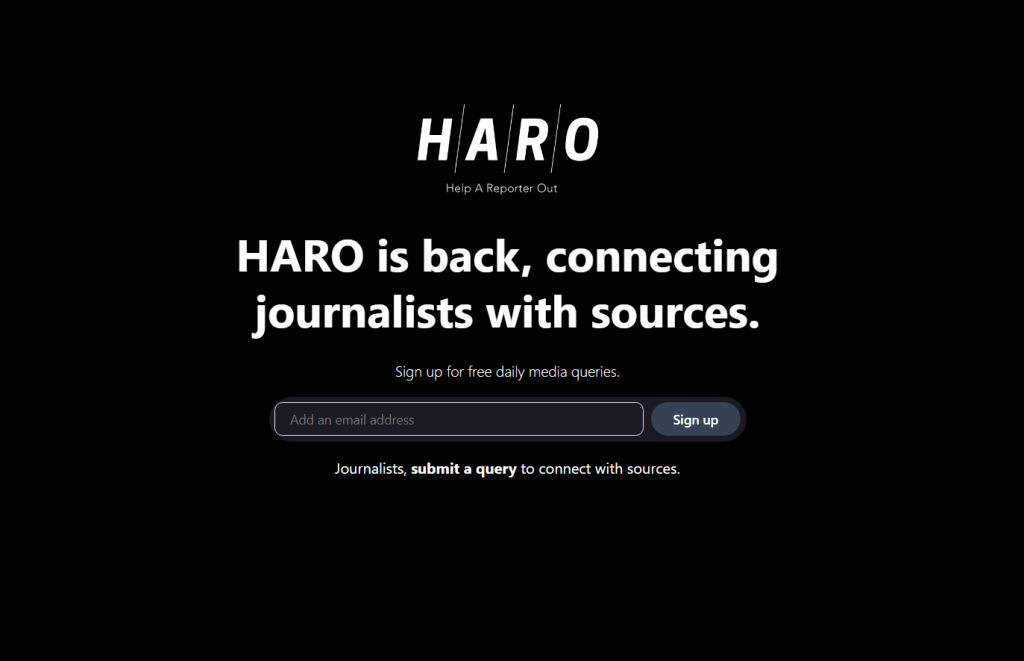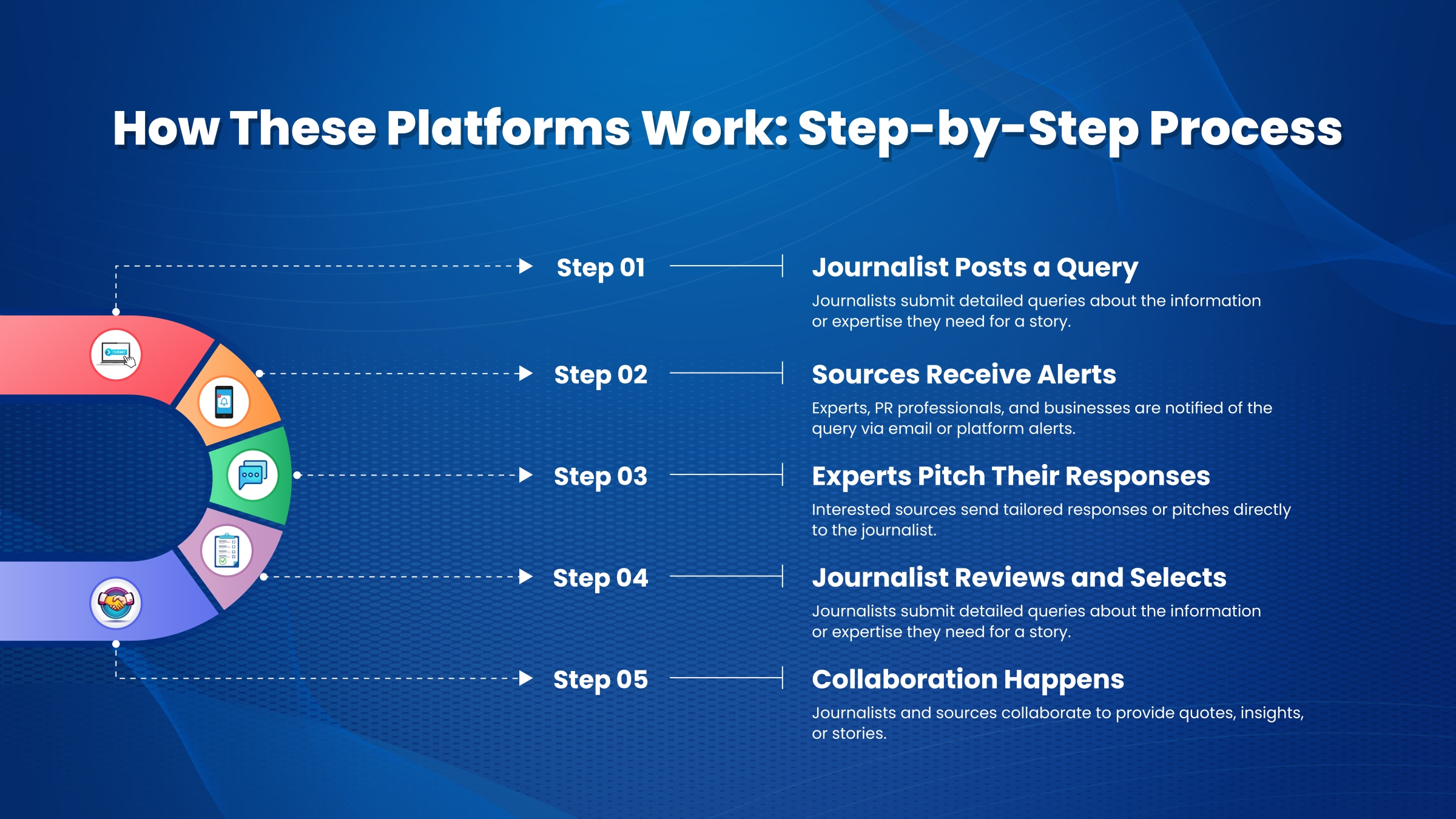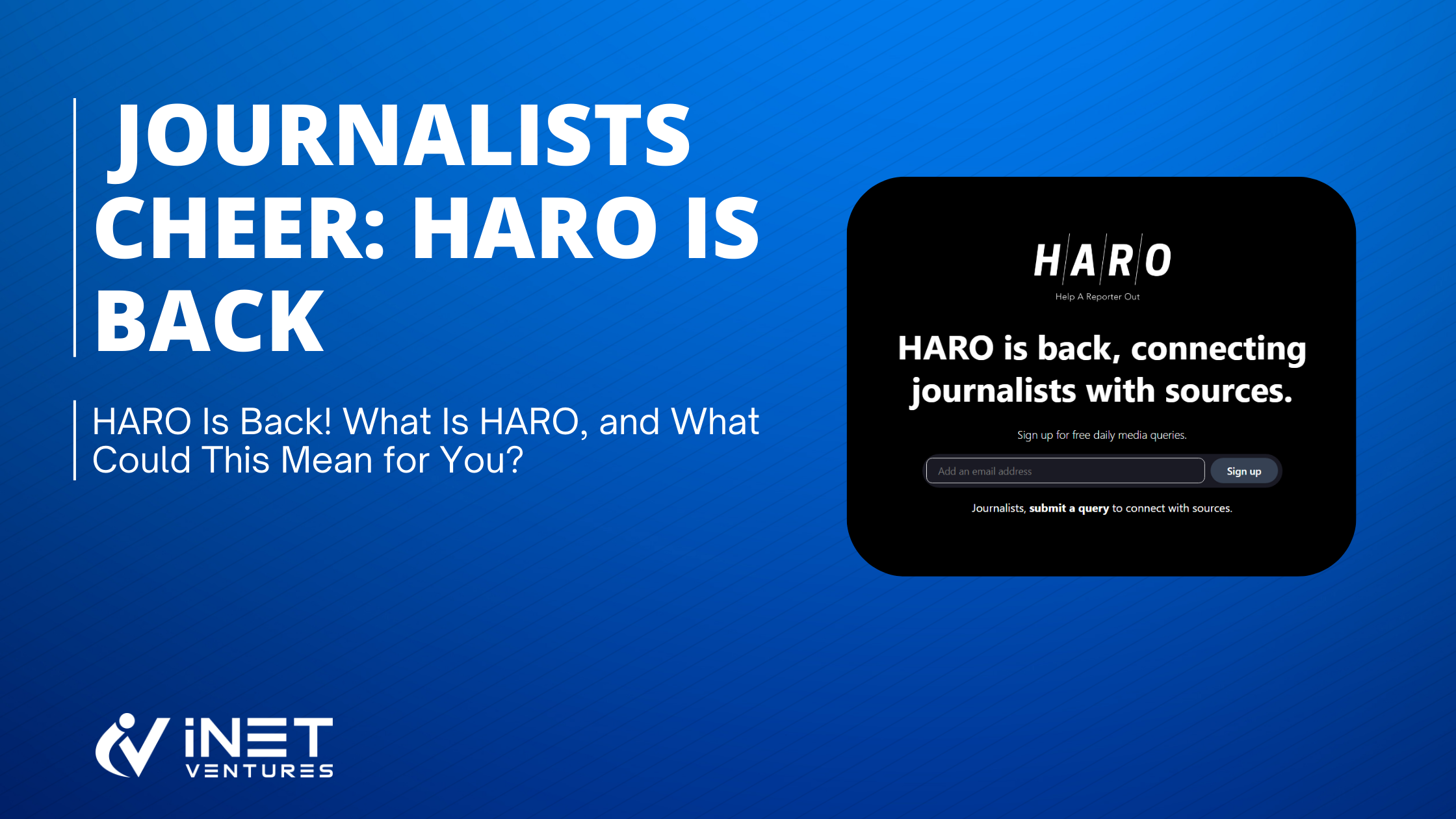It’s official: Help a Reporter Out, also known as HARO, has made its triumphant return. No longer must journalists flounder for sources; now, everyone’s favourite site that connects writers with those that have stories to share is back.
If you’ve never heard of HARO before, you might be wondering what the website is, where it went in the first place, and how it made its return. Never fear! We’ve got you covered. Let’s talk about HARO, why it’s back, and what that could mean for you.
So, what is HARO?
HARO is an acronym for “Help a Reporter Out”, which is the full name of the website. As for what exactly it does, well, the clue’s in the name!
Help a Reporter Out’s job is to help journalists and reporters find the sources they need in order to complete stories with authority. After all, a journalist’s article gains infinitely more gravitas when it has a well-placed source backing it up.
Of course, HARO isn’t just for journalists. After all, if you’re an expert and you want to boost your profile or the profile of your website, HARO is perfect for that purpose as well.

Where did HARO go?
Last year, it was announced that HARO, which was then known as Connectively after the latter’s parent company Cision acquired HARO, would be shutting down in December.
Cision said the decision was taken “after carefully evaluating customer feedback, in order to align [its] efforts with the tools that deliver the most value to [its] PR and communications customers”.
While no more in-depth reason than that was given, some have speculated that HARO’s disappearance could have been due to abuse on the part of marketers and those looking for quick, easy links to their sites.
It’s also been suggested that HARO replies from real, genuine sources were overtaken by low-quality, spammy AI replies, and thus the service became significantly devalued.
Whatever the case may be, the fact was that HARO disappeared in December, and a few months went by before anyone heard anything from the platform again.
How was HARO revived?
In April this year, Featured.com, which was, at the time, a competing service to HARO (although not after the latter’s shutdown, admittedly), acquired HARO and its successor Connectively.
Featured.com says it brought HARO back because it believes “now is the perfect time” to do so, making reference to the above AI problem; the site says “AI is flooding the internet with generic content”, and that means “journalists need credible, human sources more than ever”.
Rather than the controversial rebrand that saw Connectively take over HARO, Featured.com says it will “return to HARO’s original roots”. The site now consists once again of a daily media opportunities email that will be sent out, as well as a form that reporters can use to submit queries.
Closing its announcement post, Featured.com says the new HARO is the one “you know (and maybe missed)”, and that it has “fresh energy and a renewed purpose”.
Connect with Journalists
Our Expert Quote Service connects you with journalists and secures placements in high-authority media outlets. Boost your credibility and online presence today!
Get Expert Quotes Now
How could HARO be useful to you?
There are two major ways in which the newly-revived HARO could be useful to you, and they pertain to which side of the coin you’re trying to access.
If you’re a journalist, HARO’s usefulness is pretty obvious; you can use it to submit a media query and hopefully receive a relevant response, helping you to augment your story with strong sources and thus shore up your credibility.
If you’re an expert source, you can use HARO to provide quotes and context for journalists, and thus bolster your own profile.
However, there’s a third way in which HARO can help you, and that’s as a link-building service. If you’re running a website built around a specific industry or area of expertise, HARO can connect you with high-authority journalistic websites, thus ensuring strong backlinks for your site or platform.
It’s worth noting that using HARO exclusively for this purpose, and using it to the exclusion of other link-building strategies, probably isn’t a great idea.
While HARO can be a powerful link-building tool, you’ll be in competition with many other sites trying to get themselves noticed, and HARO can often receive hundreds if not thousands of responses, so you may not get through to the journalist in question, or they may not select you as their source.
Still, if you happen to be running a platform that exists within a certain niche and you spot a HARO story that’s perfect for you, then it stands to reason you should be jumping on that as quickly as you can.

How to use HARO
So you’ve learned all about how HARO could be useful to you, but now, you’re wondering how exactly you’re supposed to use it. Luckily, using HARO is simplicity itself. Here’s our quick guide to using the new, revived version of HARO!
Journalists
If you’re a journalist, using HARO is simple. Just head over to the query submission page and fill out the relevant info, which includes a summary of your query, your media outlet’s name and site, and what category you belong to, as well as the deadline for experts to respond.
Once that’s done, you can choose to make your query “Urgent”, which will share it to the HARO X (formerly Twitter) account, potentially helping it to reach more sources.
Experts or website owners
If you’re an expert or a website owner looking to get your link featured on a journalist’s platform, then HARO is arguably even simpler to use than it is for the journalists themselves.
All you need to do is sign up to HARO’s daily digest email, which you can do via the official HARO website. You’ll be sent a list of enquiries daily, and you can choose to respond to whichever enquiry piques your interest.
You can also choose to follow the aforementioned HARO X account, where you’ll find a number of other enquiries that you can follow up if your area of expertise aligns with the enquiry.
As the founder of iNet Ventures, James deeply understands the world of SEO, link building, growth, and strategy. After achieving remarkable results for agencies and websites, his approach combines industry knowledge with forward-thinking tactics, which embark on analytical tools and AI.


